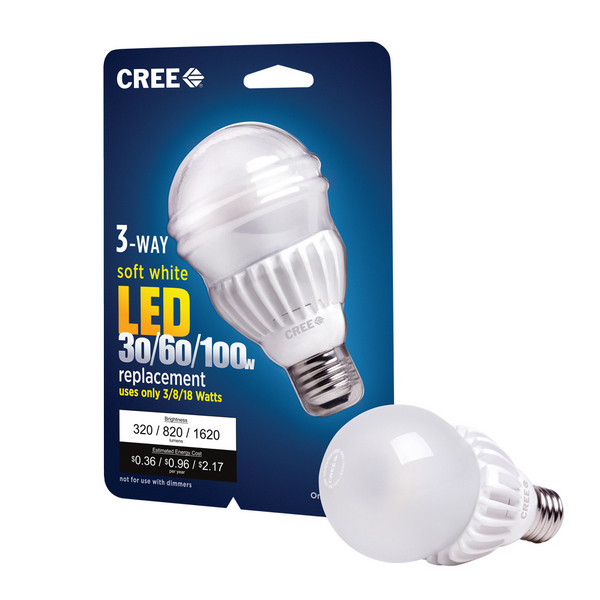While the LED industry was still reeling from news of Epistar’s acquisition of FOREPI, Philips dropped another bomb shell, announcing the merger of its LED component and automotive lighting assets on June 30, 2014.
Philips announced plans to merge its lighting components business Philips Lumileds into a stand-alone company in combination with its automotive lighting business. Revenue proportion for Philips Lumileds and automotive lighting reached US $1.9 billion in 2013, 17 percent of Philips total lighting sales, according to The Wall Street Journal. Philips will seek outside investors for the new company to share research and development costs.
Facing pressure from intense price war with Asian manufacturers in the LED industry prompted the merger as Philips moves to concentrate on more profitable businesses, including healthcare and complex lighting systems.
Second time's the charm
This is not the first time Philips has restructured its businesses in the wake of stiffening competition. In 2011, Philips sold off 70 percent of its TV business to Chinese manufacturer TPV to set up a joint venture in order to improve margins. The division had been floundering, with profits falling 31 percent in 1Q11 to US $198 million, according to a BBC News article.
With the LED market booming as penetration rates rise, the price war with Chinese manufacturers in particular has started to hurt profits, according to Reuters. Pressure to remain competitive in the market has driven Philips to seek new technology and market segments to develop. The company has therefore been investing in LED components through Philips Lumileds as well as their automotive lighting business. The company now looks to outside investors to expand capacity, potentially through initial public offering (IPO).
“First we will carve out the business and set it standalone, integrate the automotive and LED part, and in parallel we expect to engage with interested parties later this year, “said CEO Frans van Houten to Bloomberg.
Philips integrates LED component and automotive lighting businesses
The divestment of its LED components and automotive lighting business will allow Philips to combine research and development in order to focus more on connected LED lighting systems and LED luminaires, said Philips in a Bloomberg report.
The stand-alone company will be headed by current Philips Lumileds CEO Pierre-Yves Lesaicherre and is estimated to be complete by the first half of 2015, costing around US $40.8 million. Philips remaining lighting systems business will be a major consumer for the new company, according to a Reuters report. Philips will keep a small stake in the new company as a shareholder, said van Houten.
Unlike its struggling TV business, Philips lighting component and automotive lighting business are profitable and growing, said Philips. “Both our Lumileds and Automotive lighting businesses are strong players in the lighting industry and ready to pursue more growth and scale, independently of Philips Lighting,” said van Houten in The Wall Street Journal.
The move to merge the two businesses has been touted as smart by analysts who believe it will make Philips more manageable and profitable. Philips shares in Amsterdam trading have already increased 3.3 percent. Intense pricing competition is causing the LED industry to become gradually a lower margin commodity business, according to The Wall Street Journal. LED manufacturers have increasingly been turning towards integrated systems and smart lighting to create higher profit margins.
Automotive LED lighting is on the rise
Philips Lighting’s automotive lighting business has done very well for itself over the past few years. It was recently ranked at 91 in the top 100 OEM part suppliers by Auto News in 2013 due to its sales of lighting components.
“By combining Philips automotive lighting and Lumileds, the automotive lighting consumers will continue to benefit from a fully integrated end-to-end research and development and supply chain, enabling the adoption of LED technology in automotive applications,” said Eric Rondolat, CEO of Philips Lighting division.
 |
|
Philips automotive lighting arm ranked at 91 in the top 100 OEM part suppliers by Auto News. (photo courtesy of Philips Lighting) |
In regards to automotive lighting, the new company will focus on components for bulbs, automotive headlights, and high-powered LED lamps. Future automotive clients will include big brands BMW, Volkswagen, Audi, and Lexus.
Growing safety awareness and increase in purchasing power of consumers is a huge driver for the automotive lighting market. Automotive makers are increasingly turning towards LEDs as it reduces energy consumption and has a longer lifespan. With the global automotive LED lighting market estimated to grow up to 27.86 percent by 2018, it is no wonder that it is seen as the next frontier for LED lighting technology.
Could Cree become a future investor?
After the announcement of Philips’ plan to merge its Lumileds LED lighting and automotive lighting businesses, rumors have been circulating about whether the new stand-alone company will then merge with competitor Cree.
 |
|
Cree is a direct competitor with Philips Lumileds. Merger of the two companies would boost Cree's market competitiveness. (photo courtesy of Cree) |
Philips announced that it will seek outside investors for the new company and explore strategic options. Industry insiders are wondering if “outside investors” could be Cree. The North Carolina based company currently has around US $1.2 billion in cash and cash equivalents, according to TREFIS. The company has announced its interest in exploring strategic acquisitions.
Competition within the LED industry has been intensifying as global awareness towards the economic and environmental benefits of LEDs increases. Acquiring the Philips’ new spin-off company will give Cree’s competitiveness a boost in the LED market.
Neither company has revealed any information for or against the possible merger.
Future outlook
Philips merger mirrors that of rival Osram, who a year ago was split off from parent company Siemens. Since becoming independent, Osram has shown strong performance with shares growing 50 percent.
Philips is also optimistic for the same outcome for the new company. Last year, Philips announced plans to bolster profitability by increasing efficiency and pledged to reach a compound annual growth rate for comparable sales of 6 percent by 2016, up from 4 percent in 2014. Profit margins will likewise increase from 11 percent to 12 percent.













